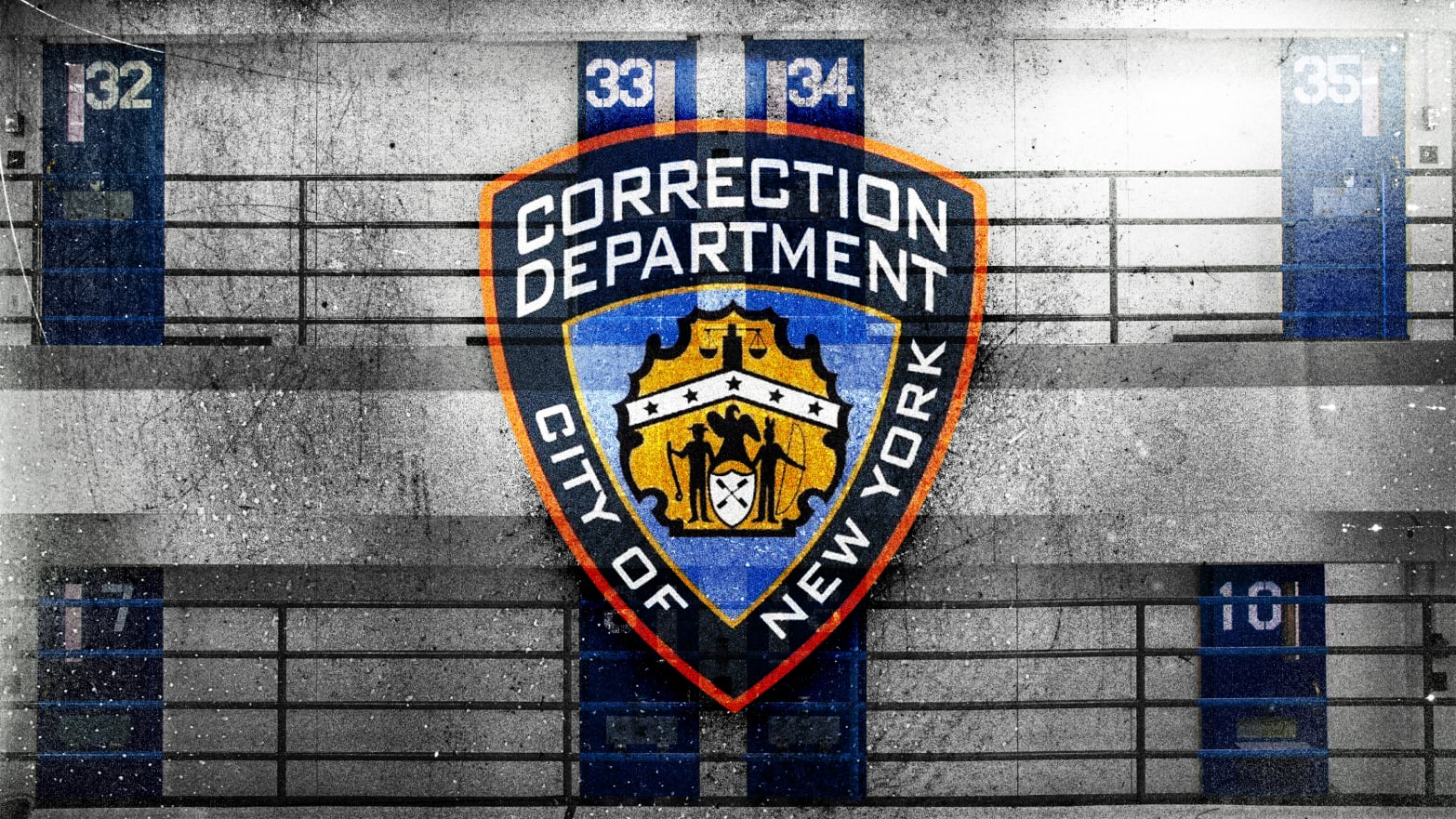Early Saturday morning, 28-year-old Erick Tavira died by apparent suicide in his cell while awaiting trial inside the sprawling jail complex known as Rikers Island in New York City. His was the 17th death this year on Rikers, which has long come under harsh federal scrutiny and, more recently, renewed calls for closure as the death toll keeps climbing.
Following Tavira’s death, Rep. Nydia Velazquez (D-NY) and four other New York City politicians made an unannounced visit to the George R. Vierno Center (GRVC) on Rikers, where Tavira was housed. Reports from both prisoners and guards, they said, were more than troubling: limited access to basic or emergency medical care, twice-daily strip searches, and a glaring lack of food, mental health services, and programming.
Perhaps most jaw-dropping? Reports of 25-hour lockdowns for men in the center’s general population.
“We have already lost 17 New Yorkers this year to New York City’s jail system,” read a statement by Velazquez, a member of the state Assembly, and three City Council members. “Based on what we saw and heard today, unless there are swift and dramatic changes, more people are going to die.”
“The officers reported that people were frustrated because they did not understand why they were in ‘the box,’ or solitary confinement, when they should have been in the general population. Also, the units we went to were in a disgusting state, with dirty water and garbage all over the floor,” the politicians added.
In interviews with The Daily Beast, three men currently housed inside GRVC described hellish conditions defined by 25-hour lockdowns—accounts that suggest the politicians only got a hint of just how awful it is to be inside the notorious jail in 2022.
“For us, it’s more like how many more people [have to die] before something changes?” 33-year-old Daquan Brown told The Daily Beast on a phone call from the jail on Monday, after hearing of Tavira’s death.
Conditions, including the duration of in-cell lockdowns, might vary across Rikers, even in any given complex like GVRC, and the nature of what Tavira experienced prior to his death was still coming into focus.
But over a series of phone calls, the men who spoke to The Daily Beast—who are all awaiting trial—said that since early October, people in their housing unit have only been allowed a maximum of seven hours out of their cells each day.
The rest of the time, they say, detainees face isolation alone in their cells for at least 25 hours straight every other day, a policy that flies in the face of basic standards the jail is required to follow. (On odd days, the men say, they are in their cells for at least 9 hours before being outside them for a maximum of seven hours at a time.)
“They're being locked in for 25 hours at a time and only let out for seven hours, which is a violation of the minimum standards that have been in place since the ’70s in New York,” civil rights lawyer Maryanne Kaishian told The Daily Beast. Kaishian represents two men who recently died at the center—including Tavira—and is in regular contact with prisoners at GRVC.
A spokesperson for the Department of Correction did not immediately respond to a request for comment for this story.
Not only does the practice as described by detainees fly in the face of local jail standards—which mandate no more than two hours in cell during the day or eight at night—but they amount to an additional form of punishment that local officials had sought to do away with, and which the United Nations said could amount to torture.
“What it means is that they’re in solitary confinement every other day,” said Dr. Craig Haney, an expert in solitary confinement and professor of psychology at University of California Santa Cruz. “I mean, a severe form of solitary confinement.” (After ex-Mayor Bill de Blasio embraced, at least rhetorically, ending solitary confinement in local jails, his successor, Mayor Eric Adams, has expressed a wish to reinstate the practice.)
Rikers Island jail complex has been overseen by a federal monitor for years, after the Justice Department identified a “pattern and practice” of violence there nearly a decade ago. But the deadly chaos has continued, with 16 deaths last year and 17 already in 2022, even as policymakers grapple with problems ranging from a powerful correction officers’ union to gangs.
To those who are stuck there, policies—formal or otherwise—sometimes create as much chaos as fellow detainees do.
In early October, the Department of Correction submitted a request to extend the amount of time the department was allowed to lock people in their cells from 10 to 17 hours per day, as part of a new plan to quell incredibly high levels of violence at the facility.
“Since June 1, 2022, GRVC has accounted for nearly half of all slashing and stabbing incidents on Riker Island,” wrote jails commissioner Louis Molina, who noted 76 slashings at the unit since that date.
After some outcry, the request was dropped, and Molina declined to attend a meeting of the department’s own oversight board—the Board of Correction—the following week. In written testimony by public defenders from the Legal Aid Society at that meeting, lawyers worried that the jail just might be going ahead with the policy even without formal approval.
Detainees and their advocates say it’s even worse than that, and that the isolation was creating a tinderbox of violence and despair.
“I've been there a number of times, and I know the challenges, but locking people in their cells is a very dangerous short-term response” Haney echoed. “It has profoundly negative psychological consequences on people who are locked in their cells around the clock. And in the long run, there's no evidence whatsoever that it’s a solution to violence.”
Haney explained that “for perhaps not difficult to understand reasons,” many feel that isolation intensifies violence—and creates both mental and physical deterioration.
Multiple men detained at GRVC specifically also raised the issue of mixing people with different crew and gang affiliations in the same area—and returning those who had been harmed to the same areas where they had been attacked.
“So that only breeds one situation: retaliation,” said Brown, who is charged with second degree murder.
While the men interviewed are accused of serious crimes, they are still pre-trial—and presumed innocent. Brown said that shouldn’t erase their rights, particularly when the idea of being locked up is to rehabilitate and do better in the future.
“I’m still a human being, I still feel what people who are not in here feel,” said Brown. “They forget that we’re human. I feel like a dog in a kennel gets treated better.”
Brown said that he was currently legally blind and claimed that, because of the conditions inside GRVC, doctors refused to give him an urgently-needed eye surgery for fear that he will lose his vision completely. He added that his lack of vision makes it so that he cannot even read during periods of prolonged isolation—and makes navigating the jail even more dangerous. Brown said he even sometimes needs to push his own eyeball back into its socket.
Meanwhile, he can’t find ways to get ahead for whenever he finally goes home.
“I can’t program and learn a new trade or skill to be a better citizen, because I’m locked in my cell all day,” Brown said.
Shaheem Bush, a 33-year-old from Queens, said that when his unit is locked down, he hears people scream and talk about harming themselves. Bush is awaiting trial for possession of a weapon.
He said that when his own thoughts get dark, he thinks of his newborn daughter, who turned 1 last week.
“That’s the only thing that keeps me sane. I be going crazy sometimes. I just gotta think [like] I’m not here, I try to read a book to keep my head out of it,” Bush told The Daily Beast.
As local lawmakers began to bring fresh scrutiny to the jail complex, those detained at GRVC hoped to appeal to the hearts of New Yorkers on the outside to call for change—especially when their calls for help on the inside fall on deaf ears.
“I don’t understand what I’m supposed to be doing,” 28-year-old Franklin Difo of Washington Heights, who is accused of first-degree gang assault, said over the phone on Monday. He told The Daily Beast that he was struggling to breathe through the smoke of a fire in the housing unit during his brief out-of-cell hours.
Difo added that he had asthma and that his family had been calling 311 and 911 because jail officials don’t respond to his sick calls.
“This is not human. Whoever thinks this is human, I don’t know what planet you’re from.”

